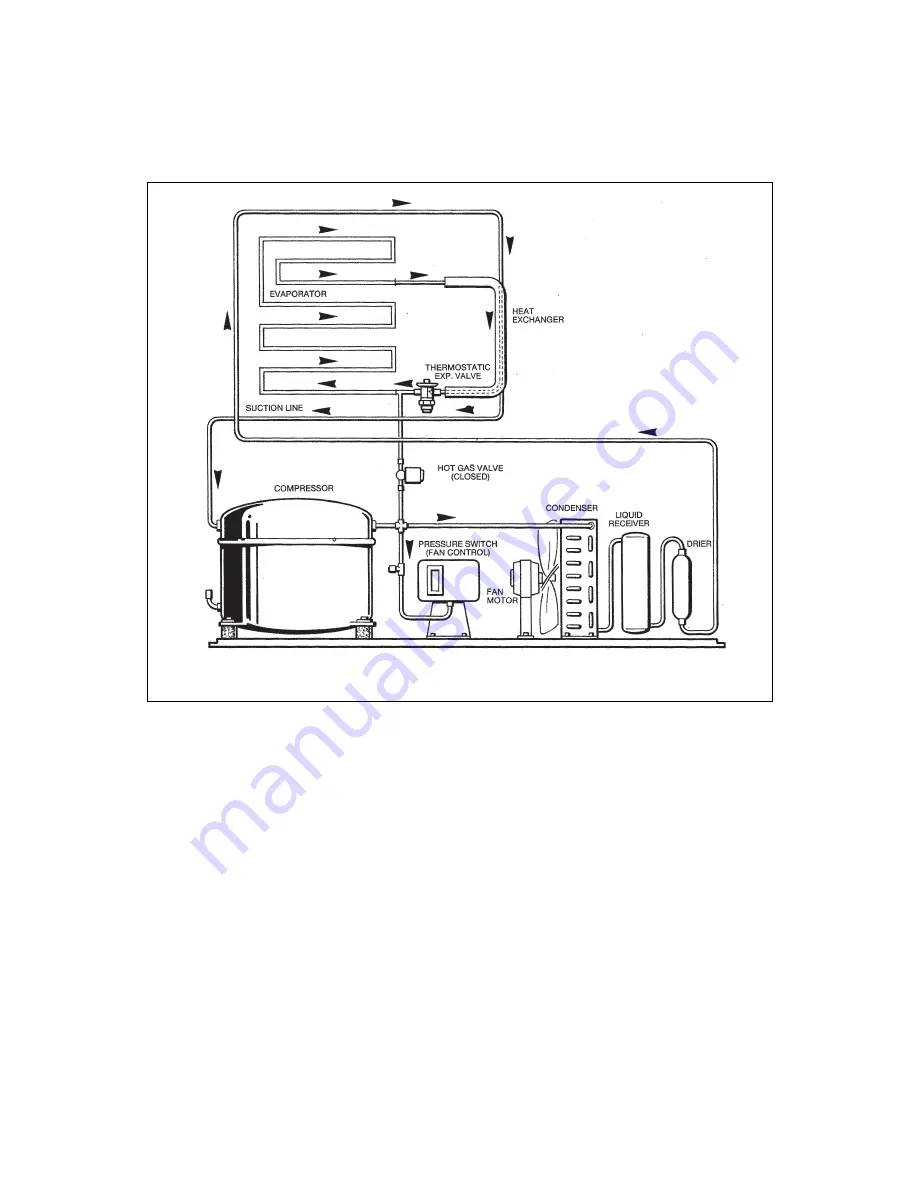
Page 20
Page 20
REFRIGERATION DURING FREEZE:
This ice machine employes either air or water as
a condensing media, the refrigeration system for
either one is a follows:
At the hermetic compressor, Refrigerant is
compressed into a high temperature, high
pressure gas.
The gas moves through the discharge line into
the condenser, air or water-cooled. If air-cooled,
the discharge pressure will change with the heat
load and the ambient air temperature.
If water-cooled, the discharge pressure is
controlled by the amount of water flowing through
the condenser - which is determined by the
water regulating valve.
After the gas is cooled in the condenser, giving
up much of its heat, the gas condenses into a
high pressure liquid. This liquid travels through
the liquid line to the metering device, a
thermostatic expansion valve.
The thermostatic expansion valve meters how
much liquid refrigerant is to be allowed into the
evaporator section of the refrigeration system.
This is determined by the temperature of the TXV
sensing bulb, located on the suction line
manifold, at the outlet of the evaporator.
If the bulb senses a warm suction line, more
refrigerant is allowed into the evaporator, (common
at the beginning of the freeze cycle) and when the
temperature begins to fall, less refrigerant is allowed
through.
This is why the suction side gauge pressure will
decline throughout the freeze cycle. At the
evaporator, the liquid refrigerant released from
high pressure, boils off in the low pressure
environment and absorbs heat, thus cooling the
evaporator surface and anything near it, such as
water.
The low pressure refrigerant vapor then is
forced through the heat exchanger where any
excess liquid refrigerant boils-off, allowing only
refrigerant vapor to enter the compressor
suction tube, where it is recompressed into
high pressure, high temperature gas again
and the cycle repeats.
OPERATION
FREEZE CYCLE
REFRIGERATION SYSTEM SCHEMATIC
















































